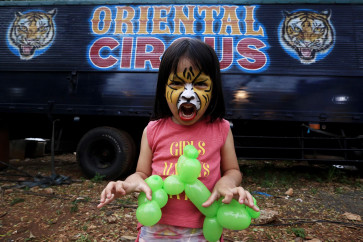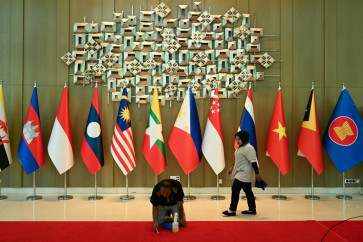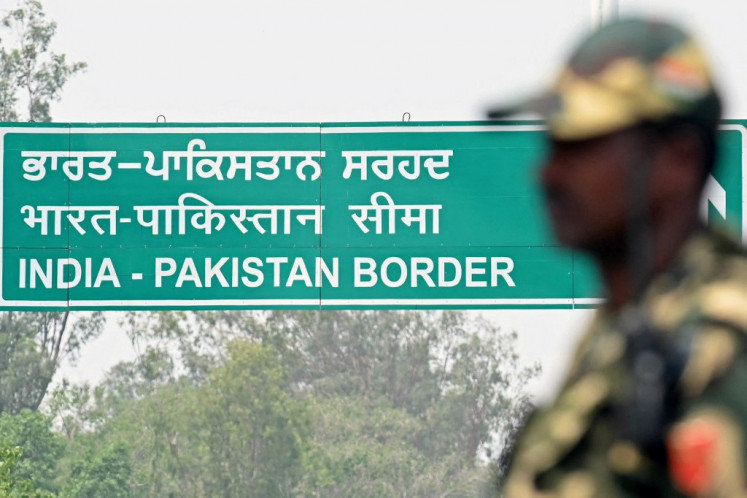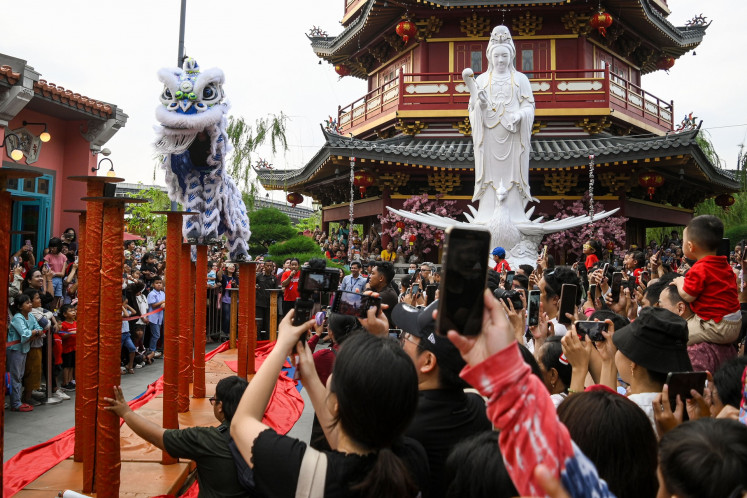Rediscovering Yogyakarta (Part 1)
Being born and bred two hours from Yogyakarta for a quarter century doesn't make one an expert on the special territory, even when visits are frequent
Change text size
Gift Premium Articles
to Anyone

B
eing born and bred two hours from Yogyakarta for a quarter century doesn't make one an expert on the special territory, even when visits are frequent.
And "truth" sometimes hits home like a smack to the head, as without expectations, Yogyakarta Plaza Hotel's recent invitation to take a few journalists on a journey down a road less traveled through Yogyakarta was a combination of mind opener and bitter reality.
It didn't start off too well though, as special days like Valentine's Day and Chinese New Year * both on the same date to boot * caused an explosion in airline passengers from Jakarta to other cities. And arriving an hour before departure time * instead of two * is not such a bright idea, especially if you plan to travel with a certain local budget airline, if complaints about its services are anything to go by.
Garuda Indonesia, however, has always been a dependable airline, so that when that particular budget airline demands that a dozen of its complaining passengers pay full price for another ticket for the next flight, paying slightly more is worth it. Specifically because you know that Garuda won't take off without you.
The hospitable nature of the people at Yogyakarta Plaza Hotel was liberating. Part of the Prime Plaza Hotel chain, the two-story building is a four-star hotel with majestic traditional Javanese architecture. In addition to its 157 available cozy rooms and the pleasantly dim, vast lobby, the swimming pool and international standardized spa are inviting.
Location-wise, the hotel is highly strategic, with the international airport, train station, Jl. Malioboro and Gadjah Mada University just minutes away. Just as conveniently, the cultural attractions of Yogyakarta are also nearby, making the whole Yogya experience worthwhile.
After a satisfying lunch by the pool on the day of our arrival, we prepared to embark on a journey called "The Village Tour", riding Andong (traditional horse carts) along the tracks between paddy fields surrounding Prambanan to visit cultural and community sites in the surrounding areas.
"We usually start in the morning, covering various sites like Plaosan temple and neighborhoods where fermented sticky rice, tempeh and emping (chips) are made. We have also combined the experience of making a brick at a traditional brick site or woodcutting in the handicraft village of Bobung on the tour. The half-day journey starts at Manjusrigraha traditional puppet museum and ends with lunch at Kali Opak Restaurant," said our guide Suryadi.
The tour cost Rp 100,000 to Rp 150,000 per person, while Manjusrigraha holds Suryadi's collection of traditional puppets, paintings, keris daggers, rare batik fabrics and a full set of gamelan instruments.
With his wife Yuli, Suryadi opened Kali Opak Restaurant in Ngablak, Sleman, in 2003. A German-speaking tour guide, he made the village tour available after a request from a foreign tourist who visited his restaurant. He now has various packages from village tour plus lunch to village tour plus traditional puppet performance or brief gamelan practice session.
"Both the Jakarta International School and the Deutsche Internationale Schule Jakarta are regular customers. Internationally, the package is offered to Dutch tourists via Fox Raizen travel agency, bringing hundreds of tourists four to five times a month. The packages are also quite known in Switzerland," he added.
Reachable via kaliopak_resto05@yahoo.ca, around 400 to 500 international tourists take the package during peak season, usually from April to September. "Local tourists are also welcome," he said, acknowledging that only a handful of locals preferred heritage sites and green lush sceneries to shopping for cheap goods.
Yogyakarta, sitting on 3.185,80 square kilometers of land with a four million population, has its Center for Preservation of Cultural Heritage (Balai Pelestarian Peninggalan Purbakala) reporting a total of 185 temple complexes, many of them located in Sleman and the majority of them left unattended.
Acknowledged majestic world heritage sites like Prambanan and Borobudur temples are locally well-known, but information on other temples * like the nearby Mendut or Pawon temples in addition to those located a bit farther like Ijo temple in Sambirejo village and Morangan temple in Ngemplak sub-district * is scarce.
Plaosan Temple is sadly one of them. Located about a kilometer north of Prambanan, the temple complex was awfully quiet when we visited the site. The wet black stones of the twin temples glimmered on that dark rainy afternoon, surrounded by about 50 unfinished temples and two statues of demon giants guarding the front. Although affected by the 2006 earthquake, major temples are still standing with contrasting green yards hidden perfectly by the walls surrounding each of the two * a remarkable view compared to the dusty fields of Prambanan and Borobudur.
Remnants of Mahayana Buddha, including near perfect statues of Samantabadra and Ksitigarbha inside the North Temple and Manujri in the South Temple, are silent witnesses to the unification of the Sanjaya and Syailendra dynasties through the political marriage of Rakai Pikatan (838-851 AD) to Pramodhawardani in the ninth century.









